Last week I came across this one-legged White-faced Ibis at Farmingtom Bay. Normally, these birds feed by slowly wading through the water and locating their invertebrate prey by tactile probing of the muddy substrate. Their long, recurved and extremely sensitive bill is an ideal tool for this purpose.
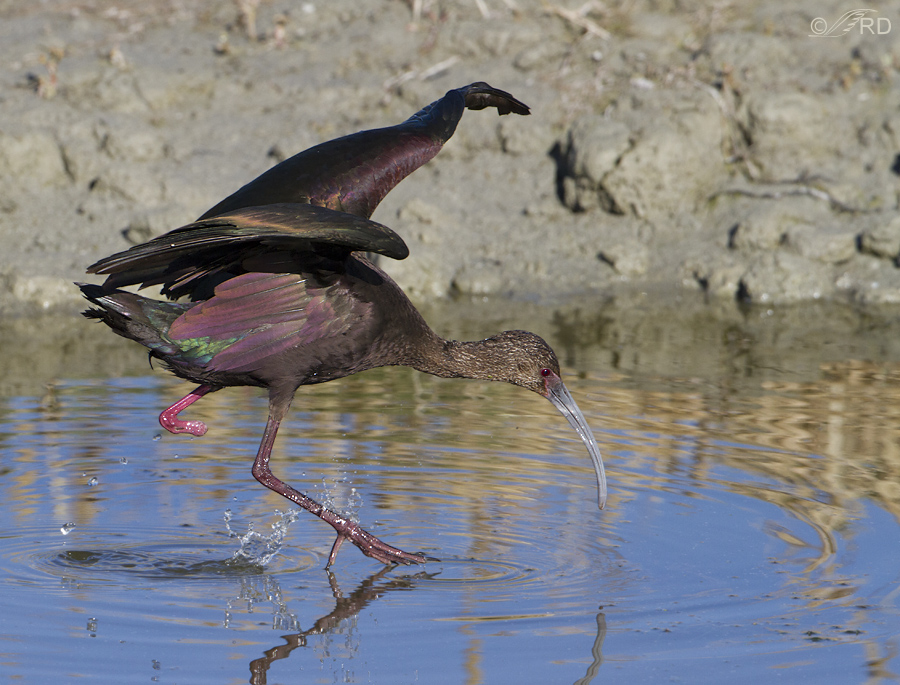
But this bird, of course, is unable to wade. So it would stand in one spot for a few seconds while feeding and then jump to the next spot with great effort.
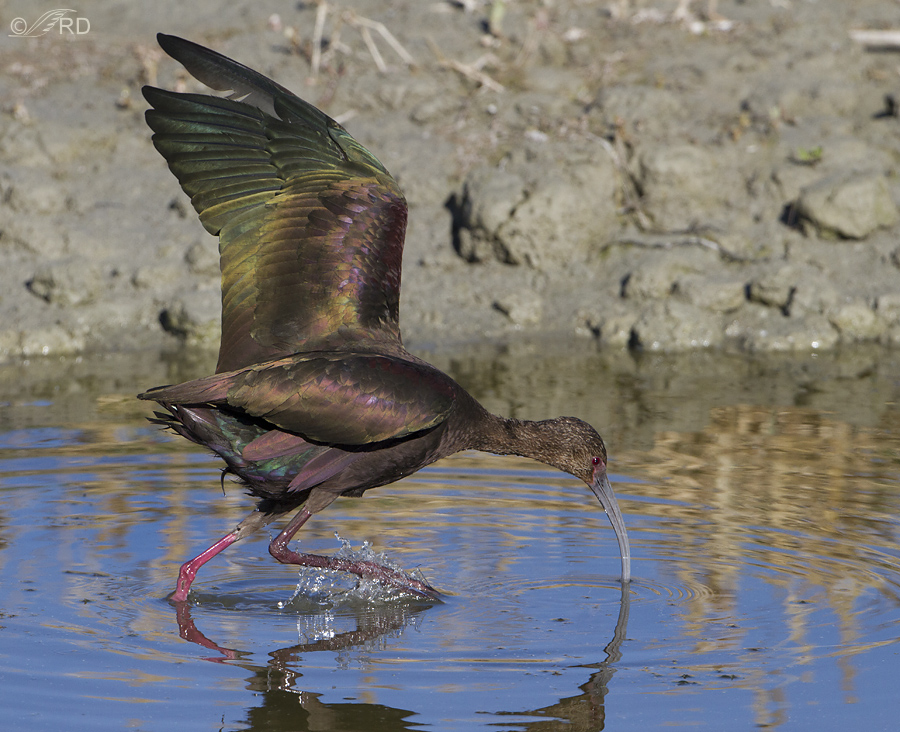
The problem it had with this method was maintaining balance as it was landing in the new spot, since it couldn’t put down the missing leg for support.

So, as it landed it would use that long bill as a sort of substitute for the missing leg and foot, thus gaining an additional balancing and support point in the mud.
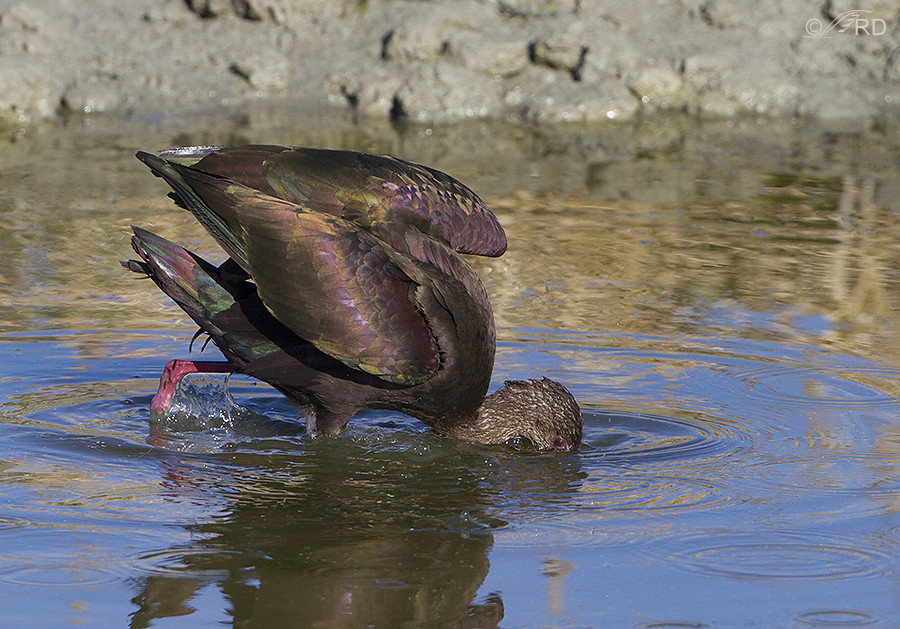
Here it has just regained balance and is closing its wings and pulling its long bill off of the mud.
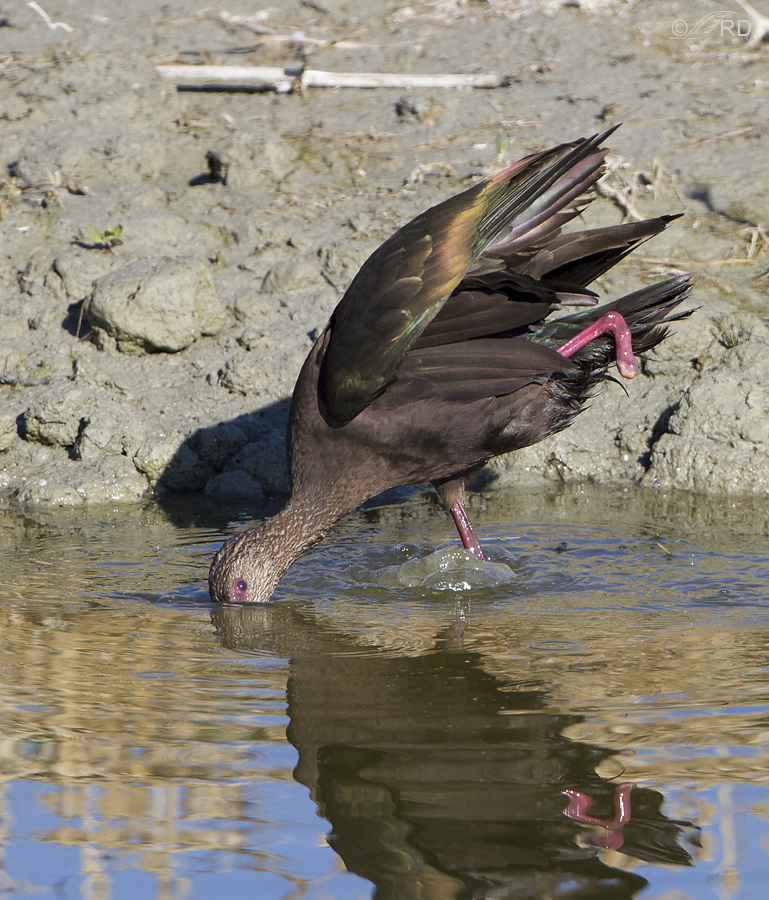
Perhaps what the bird was doing can be better visualised from this one photo, where you can tell from the turbulence around the right leg that the ibis has just landed in this spot a split second before and that it is using its long bill to brace itself in order to regain balance.
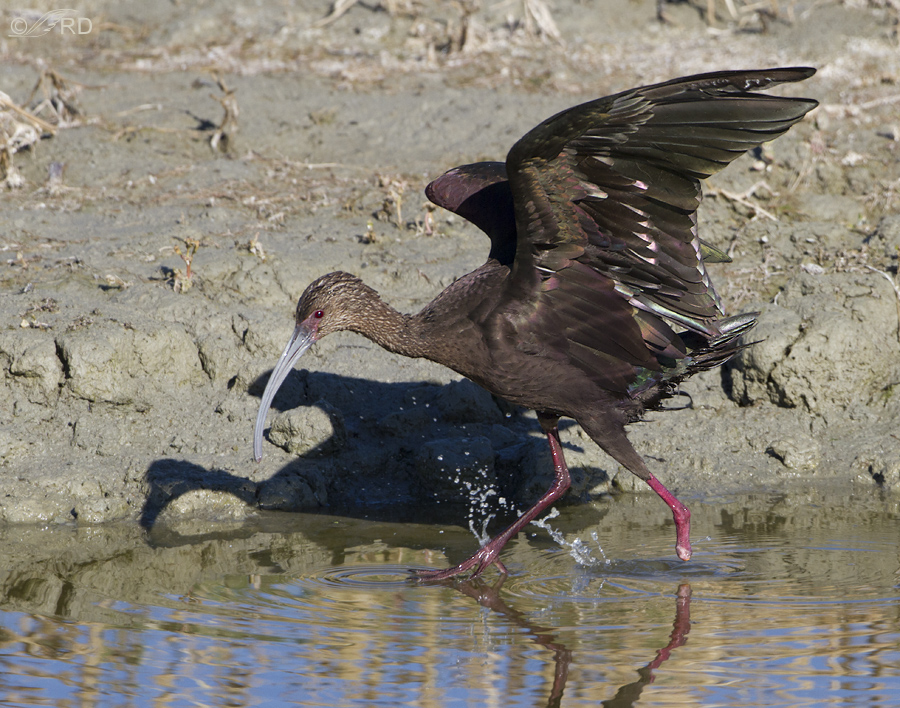
And here I caught the ibis just as it was “landing” on a new feeding spot – the water is actually fairly deep here.
I hope this post isn’t seen as much ado about nothing, since one-legged birds and their struggles aren’t particularly uncommon. But I was much impressed with the resilience and adaptability of this bird under very trying circumstances. The ibis looked and acted healthy and vigorous and the leg seems to have healed nicely.
That said, I don’t have high expectations for the long-term survival of this bird. While I watched it struggle to feed, what kept going through my mind was “that’s a whole lot of effort for a small return in food”. After all, survival is an energy game that can only be won if more energy is gained than is lost in its pursuit. And the amount of energy expended each time this bird jumped out of the water, flapping it’s wings in the effort and then trying to regain its balance was very high.
I hope I’m wrong…
Ron


I wonder how it lost its leg? And why it didn’t bleed to death? Fishing line? trap? Life will find a way, if at all possible.
I also was curious as to how the leg was lost, Tana. It’s my understanding that birds have relatively little circulation in their legs and feet (an adaptation to the cold) so that may have prevented the bird from bleeding out.
Amazing to see how birds (and other animals) can adapt and hopefully survive. Great job on the images and showing the wonderful iridescent colors of this Ibis.
Thanks, Jim.
I found this study both interesting and inspiring! I loved the ibis which I have never seen and thought it’s ability to adapt was a true inspiration. I was also heartened to know that even though impaired, they can adapt. I raised this question with a one leged hawk and could not get a satisfactory answer, so now I can quit worrying about the hawk I saw. Like any sepcies missing a limb, it’s challenging but it is possible to adapt.
I hope your one-legged hawk does well, Charlotte.
Not too long ago I also witnessed a one-legged glossy ibis in our wetlands hunting (successfully) for food, but I sat for some time sharing similar concerns. The comments and further information is very also interesting — in addition to the caloric and energy balance that you raise, for example, to learn about the infections. I understand Nature, but I do hope — as Louise says — that the water helps these guys. And the one-eyed hawk, thriving! Wow. Survival of these guys is just amazing.
There are some incredible survival stories out there, aren’t there Christina? That one-eyed hawk amazes me too.
We often see a magpie with a badly broken leg. It has been in the area for at least two seasons, perhaps three. They predominantly eat invertibrates and use their beaks to find and retrieve them. I have noticed that the ‘good’ leg is a great deal thicker now. Still, it looks healthy and active so I continue to cross everything.
I know from experience that ‘compensating’ for a body part that doesn’t work as well as it should has its own, usually deleterious effects. So then, we compensate for the compensation. A lot of energy expended.
Elephant’s Child, A one-legged Black-billed Magpie hung out at the house of my friend’s mother for almost 10 years and did very well the whole time. You just never know, I guess…
Where there isn’t enough left of the injured leg, like with this ibis, for it to bear any of the bird’s weight even at rest, one of the main problems the bird may face is sores and infections on the good foot from over-use. Unfortunately we see that in raptor rehabilitation with some frequency … one leg may got broken, but he can still fly so isn’t brought in for care; putting all his weight on the good foot causes the scales to slough, then the tender skin underneath to break, infection sets in, etc., etc. So by the time we get the bird, he’s not only thin from trying to hunt with one foot, he’s very ill from a rampant infection which can be very difficult to treat. In the case of the ibis, maybe being in water a good part of each day will help prevent that. But I share your concern, Ron, about the calorie/energy balance, especially when you add in the need to expend energy staying warm as we go into winter. Aren’t birds just amazing?
Louise, thanks very much for your expert observations. I’d never even thought of the effect of the extra wear and tear on the good foot after an injury like this. So many things to consider…
Your guess is correct, Ron. The male hunted for both for the first two weeks. By the middle of the third week, she was off the nest during the day more than she was on it. I worried for the chick being alone and unprotected so much, but the nest was strategically placed about 75′ up a liquidambar tree. There were big clusters of leaves that overhung the east- and west-facing edges of the nest. In the mornings the chick would hunker down under the umbrella of the leaves on the east side and in the afternoons, it moved to the west side. I don’t know if the parents intentionally oriented the nest this way or if it was just good luck. It seemed pretty clever since the temperatures during the afternoon were up to 104 degrees. The north and south sides of the nest were clear of leaves and branches and the parents used these sides for entry and exit. Watching this family until the chick fledged was one of the great experiences of my life.
I’m jealous of your experience, Sharon – and loved the last sentence in your comment.
My empathy gets the best of me and my heart breaks for this poor Ibis. It’s good to see that it has adapted well enough for the leg to have healed and for the bird to still look healthy, but it’s still hard to see and like you, Ron, I fear it won’t have a long life. My sister and I watched (from far,far away) a one-eyed female Red-shouldered Hawk and its mate raise a single chick until it fledged. I’ve read that it is quite uncommon for one of these hawks to lay only one egg, but perhaps that’s how this one managed with only one eye. Thanks for sharing this with us.
Sharon, Wow – a one eyed raptor that not only thrived, but helped to fledge a chick. Raptors depend so much on good vision and depth perception when hunting that I find that amazing. Perhaps she did as well as she did because the male was bringing in food for both her and the chick. Just guessing…